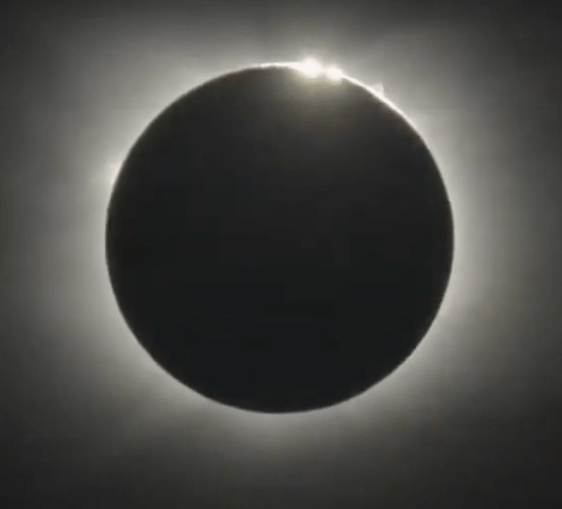The year 2024 holds a rare celestial event that has captured the imagination of millions around the world – the total solar eclipse of April 8.
This awe-inspiring phenomenon occurs when the moon passes between the sun and the Earth. It castes a shadow that momentarily darkens a portion of the Earth’s surface.
The 2024 eclipse is particularly special because it will be visible across North America. This, in turn, will offer a once-in-a-lifetime opportunity for millions to witness this natural wonder.
WHAT IS A TOTAL SOLAR ECLIPSE?
A total solar eclipse occurs when the moon completely covers the sun, blocking its light and casting a shadow on the Earth.
This creates temporary darkness in the middle of the day, known as totality when the sun’s corona becomes visible to the naked eye.
Total solar eclipses are rare events that can only be observed from a specific path on Earth, which is why they are so highly anticipated and widely celebrated.
THE PATH OF TOTALITY
The path of totality for the 2024 eclipse will stretch across North America, starting in Mexico and passing through the United States and Canada.
Major cities such as Dallas, Indianapolis, Cleveland, Buffalo, and Montreal will experience totality, making it accessible to a large population. Outside the path of totality, a partial eclipse will be visible, offering a unique experience to those who cannot travel to the centreline.
BEST PLACES TO VIEW THE ECLIPSE
While the eclipse will be visible along a path stretching over 800 miles, some locations offer better viewing than others. Cities like Austin, Texas, Little Rock, Arkansas, and Indianapolis, Indiana, are in the direct path of totality and are expected to have clear skies, making them ideal locations for viewing the eclipse.
However, even if you’re not in the path of totality, you can still witness a partial eclipse, which will be visible from most of North America.
SAFETY PRECAUTIONS
It’s important to remember that looking directly at the sun, even during an eclipse, can cause permanent eye damage.
To safely view the eclipse, you’ll need special solar viewing glasses or a solar viewer. These glasses are designed to protect your eyes from the sun’s harmful rays while allowing you to see the eclipse clearly. Regular sunglasses are not sufficient for viewing an eclipse and can cause serious eye damage.
WHEN THE ECLIPSE HAPPENS WORLDWIDE
Partial eclipse begins: at 15:42 UTC on April 8.
Total eclipse begins: at 16:38 UTC on April 8.
Greatest eclipse: at 18:17 UTC on April 8.
Total eclipse ends: at 19:55 UTC on April 8.
Partial eclipse ends: at 20:52 UTC on April 8.
Note: The instant of the greatest eclipse – when the axis of the moon’s shadow cone passes closest to Earth’s center – takes place at 18:17 UTC. It’s a relatively long total eclipse with a duration of totality lasting 4.47 minutes.
The last total solar eclipse occurred in 2017. But this year promises to be a once-in-a-lifetime experience for those lucky enough to witness it.
Article Reference
- https://earthsky.org/astronomy-essentials/total-solar-eclipse-april8-24/
- https://www.space.com/new-moon-april-2024-observing-guide-solar-eclipse







